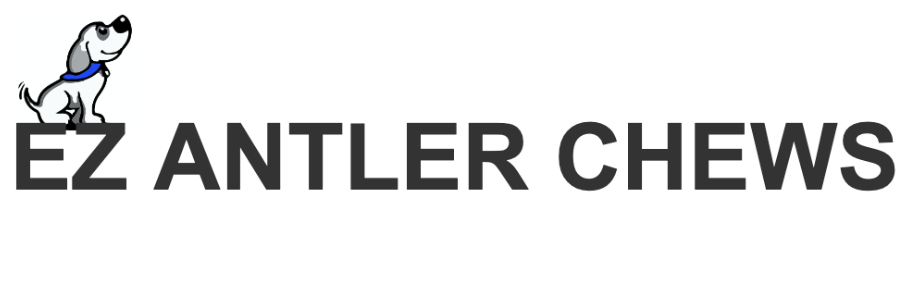
How to Choose Between Moose, Elk and Deer Antlers for Dogs
So, you're standing in the pet store looking at all the options for dog chews. You've heard that antlers are a good, all natural, long lasting option for your dog, but you're unsure of the difference between the species. Understanding the differences between species of antlers can help you make an informed choice for your pup.
Moose: The Softest Option
Moose Antlers grow in a unique paddle formation and are the softest variety of antler. Here's what sets Moose Antlers apart:
- Higher Marrow Content: Moose Chews have a higher ratio of soft, porous marrow compared to the dense outer layer. This marrow is less dense and more spongy in texture, making it easier for dogs to chew through.
- Thinner Outer Layer: The outer layer of a moose antler paddle is thinner and less dense than other species like elk or deer. Dogs are able to access the softer inner marrow more quickly, making this option not as long lasting as a deer, or whole elk.
- Enrichment through Unique Shape: Moose have a wide, flat paddle shape rather than the taller, narrower beams found in elk or deer tines. This paddle shape is unique, and exciting, to dogs and becomes a great chew to put in rotation with other species.
Elk Antlers: The Cadillac
Elk Antlers are often considered the "Cadillac" – our most popular offering due to the high marrow content, and the ability to be split to expose such marrow. Here's what makes Elk Antlers a popular choice:
- Moderate Hardness: Elk Antlers are tough enough to be long-lasting but not too tough for your dog's teeth. They have a good balance of marrow and outer layer density.
- Larger Size: Elk antler chews are generally thicker and bigger in size compared to other antlers.
- Split vs. Whole: Being that Elk Antlers are so large, they are able to be 'split' or 'cut' lengthwise to expose the marrow. We always recommend that customers start with a split Elk Antler, if their dog is new to chewing antler. Split Antlers expose the marrow, serve it up on a platter, and aren't as hard as a whole Elk Antler. If the Split Elk Antler goes well, consider graduating to a Whole Elk Antler for more longevity.
Deer Antlers: The Hardest Option
Deer antlers are the hardest among the three options, making them suitable for occasional chewers that want their chew to last a long time. Here's what sets deer antlers apart:
- Dense Exterior: Deer antler chews have a tough exterior and a low amount of marrow, making them extremely durable.
- Smaller Size: Deer antler chews are often skinnier and generally smaller in size compared to elk or moose antlers.
- Long-Lasting: Due to their dense composition, deer antler chews can last a long time, even for heavy chewers.
However, it's important to note that deer antlers may be too hard for some dogs; particularly if you're unsure of your dog's dental history, the dog is senior, or is a tenacious chewer that chew too aggressively.
So, Which Antler Will You 'Chews'?
When choosing an antler chew for your dog, consider their chewing habits, jaw strength, and dental health. Moose antlers may be a good starting point for puppies or dogs with sensitive teeth, while elk antlers are a versatile option for most dogs. Deer antlers are best reserved for casual chewers that want a durable chew that packs longevity.
Remember, supervision is always recommended when giving your dog any type of chew, and it's essential to provide fresh water and monitor for any signs of discomfort or excessive wear on their teeth.

